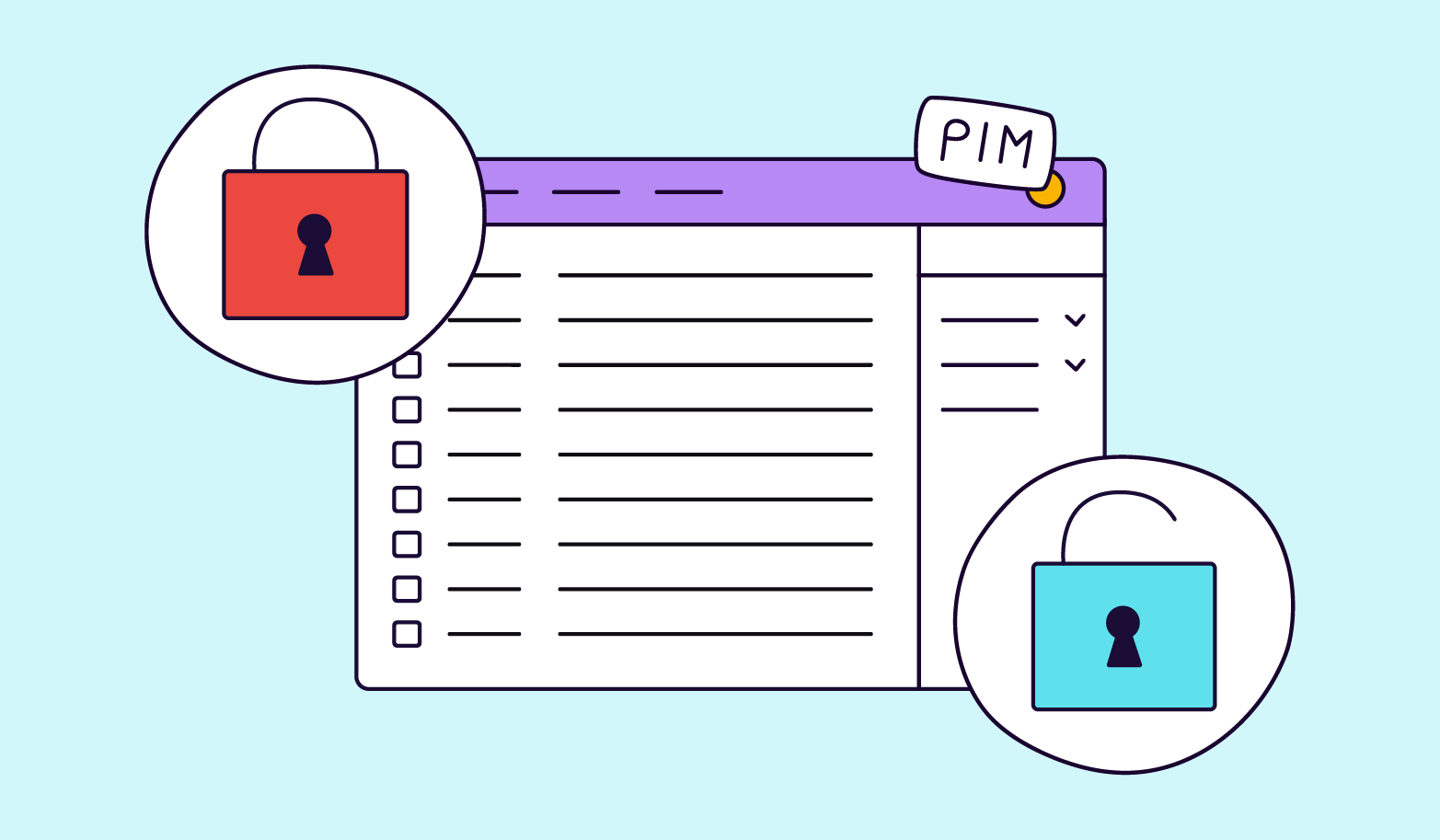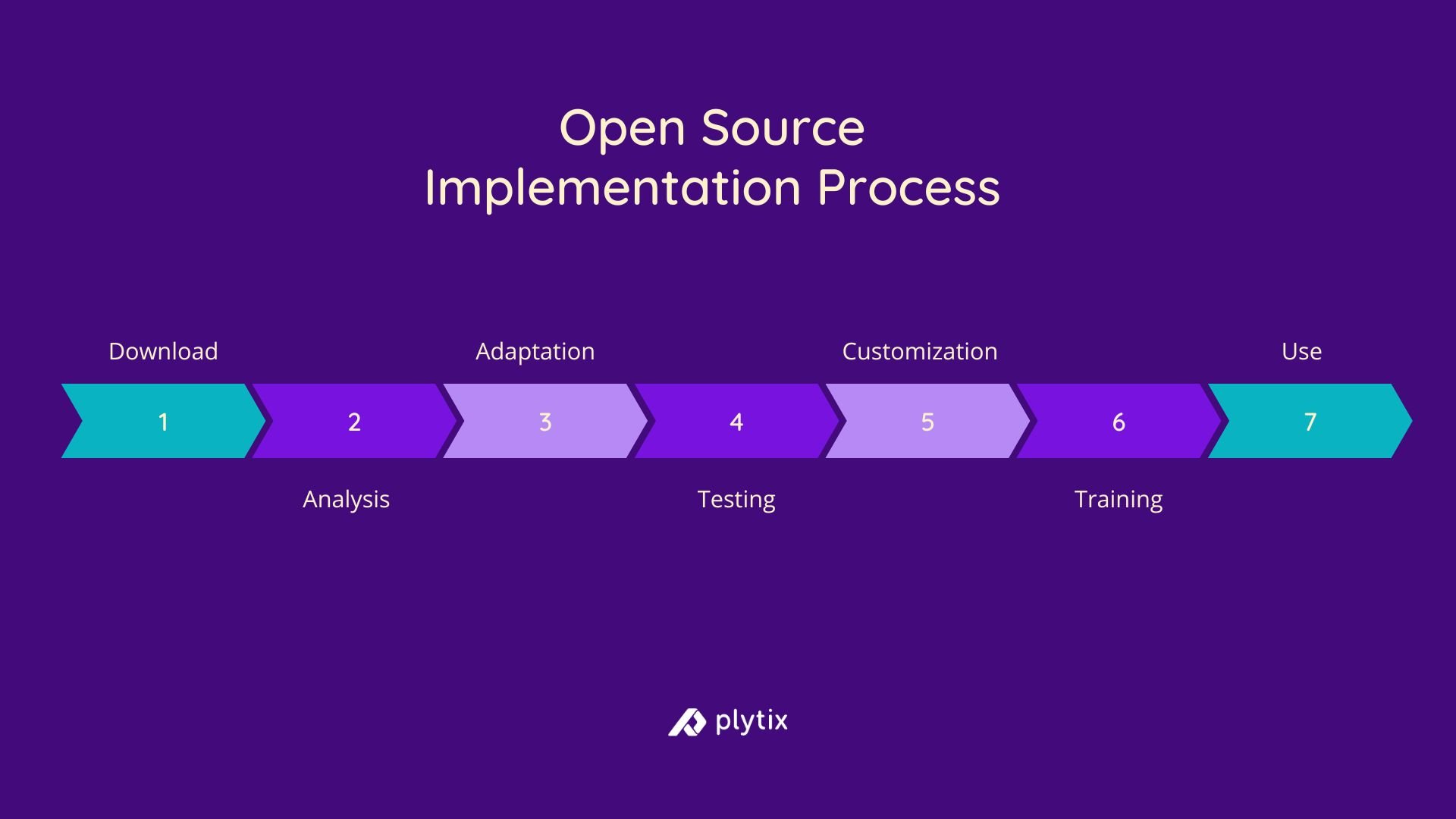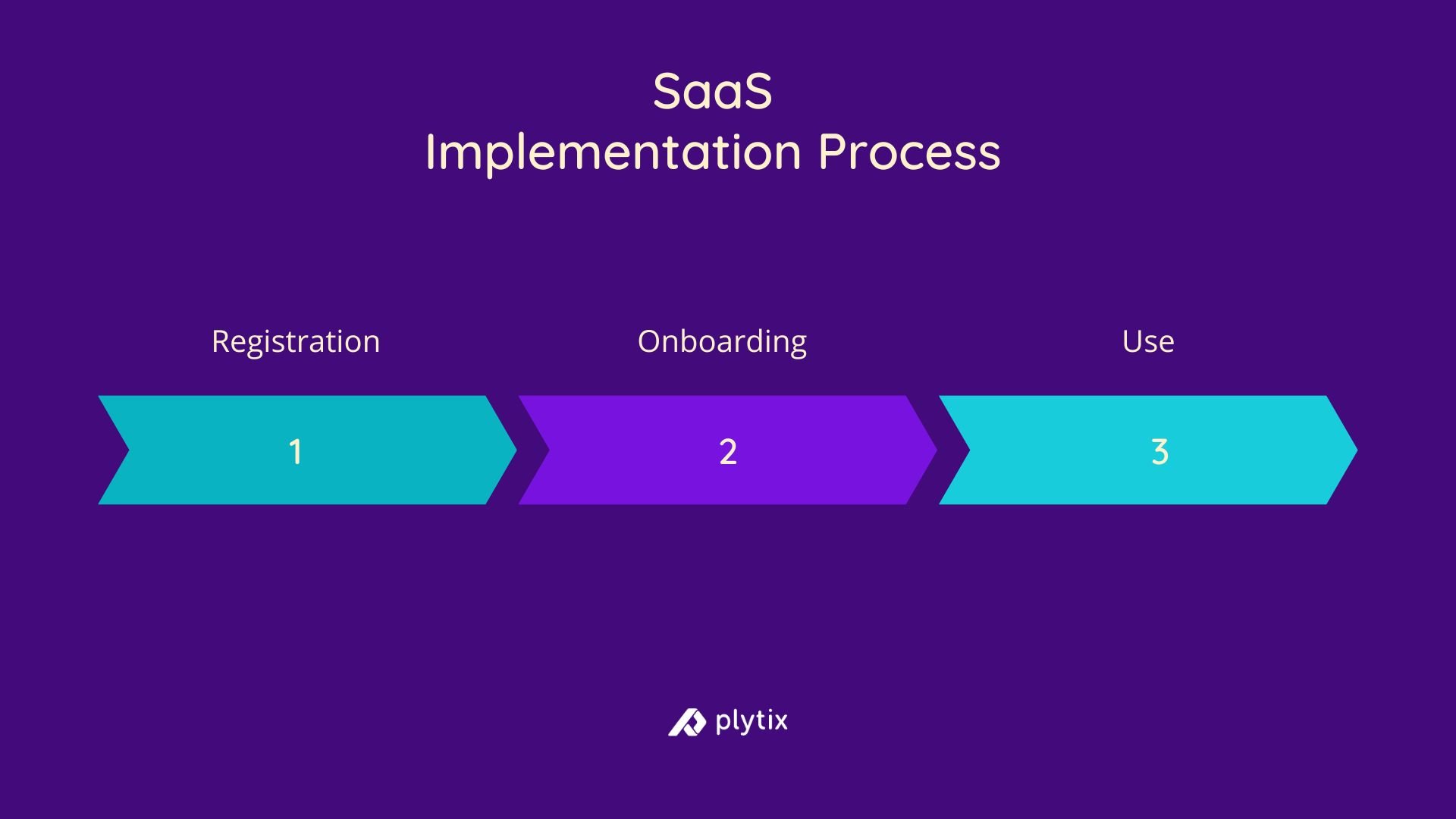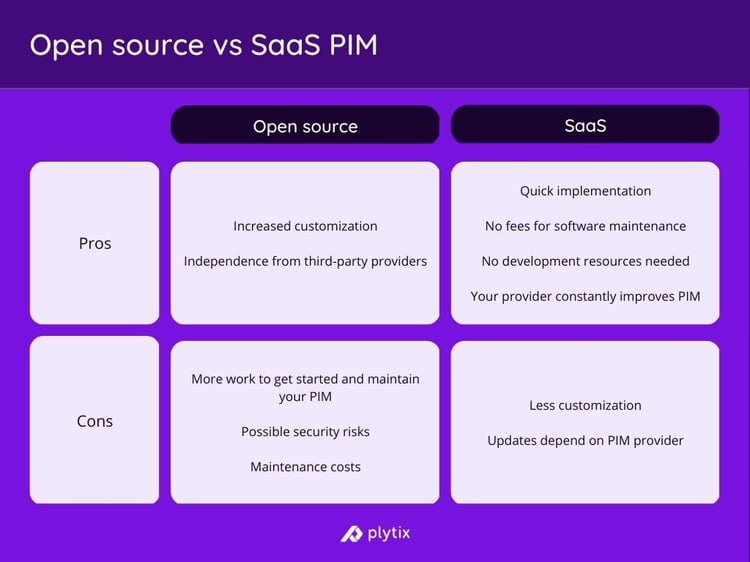
Keep the good stuff coming
Subscribe to our blog newsletter and get monthly content that helps you manage product data smarter.
No spam. Just real value.
If you’re reading this, you already know that starting an online business comes with a significant list of challenges. Tracking data scattered across multiple spreadsheets, ensuring everyone is working from the latest information, and keeping prices updated across all platforms, among many other tasks, can be overwhelming.
Thankfully, there's a solution to these issues: PIM software.
Product Information Management (PIM) software helps you store, organize, and update all your product data, simplifying your entire selling process. But with so many options available, how do you choose the right one for your business?
Read on to learn about two of the most common PIM systems on the market: open-source and SaaS. (Or check out the video version if you prefer a more dynamic overview!)
Why should your business use PIM in 2024?
PIM software can make all the difference in managing your product data and digital assets. It's like trying to email all your customers individually with every new offer instead of using a marketing automation tool—you wouldn't want to do things manually when there are a thousand tools out there that can make your life easier, would you?
The right PIM can benefit all areas of your business: from marketing and sales to product management and operations. But how, exactly? Well, there are a few benefits PIM software users usually see:
- Data consistency across multiple channels
- Improved product data accuracy
- Faster and easier omnichannel marketing and sales
- Shorter time-to-market
- Improved communication with manufacturers and suppliers
- Lower costs for product data management
- Quick adaptation to market changes as they happen
In short, using a PIM can save you and your team a headache or two—especially if you want your business to stay relevant when customer demands can change overnight.

What is an open-source PIM system?
Open-source PIM software is product information management software that’s free to download and use. If you have the right coding skills, you can also modify the software to suit your needs—this means you can change the way it works by editing the program's code and adding new features using additional software components or libraries.
But as nice as that may sound, it’s important to bear in mind that open-source PIM is not free, free. While the initial download may cost you nothing, this model will require some later investments, like:
- Licensing fees (some PIM providers charge up to $50,000)
- Hosting provider fees
- Web developer or agency fees
- Maintenance fees
- Security updates and fixes
- Apps or extensions
And, as you can probably imagine, open-source PIM software is not “plug and play,” but more “plug, program, personalize, play, and then program again.”
If open-source PIM software interests you, here are some options you could explore:
- Akeneo—an open-source PIM system known for its robust capabilities and strong community support
- Pimcore—a software that goes beyond the basic PIM services and integrates different features for digital asset and content management
Pros and cons of open-source PIM systems
At the end of the day, whatever PIM solution you choose is an investment in your ecommerce business. You want to make sure you’re getting as much bang for your buck as possible, so choosing a PIM takes careful consideration of all the options.
There are upsides and downsides to any software. But let's take a closer look at what we find to be the pros and cons of choosing an open-source solution.
Pros of open-source PIM solutions
If you’re considering an open-source PIM solution, you’ve probably already been drawn in by some of its pros, which generally include these key features:
- Full control—configure the software however you need and on any platform, based on the requirements of your product catalog.
- Unlimited API connectors—so you can add all the integrations you want, not just the ones that are offered by the PIM system.
- Full flexibility—make changes to your system whenever you want to.
Cons of open-source PIM solutions
Before you hit that download button, remember that no system is perfect. The pros of an open-source PIM, in many cases, are outweighed by the cons, which include:
- Hidden costs—unless you’re a coding expert, you’re going to need to hire an IT team to help you implement, customize, and maintain the system. And all that, as you can guess, costs money.
- Compatibility issues—It can be tough to find compatible extensions and connectors for an open-source system.
- No plugins included—your PIM solution won’t come with a contract for complementary plugins, like the ones included with many SaaS systems.
- You’re on your own—you won’t get any included training or customer support with your system unless you pay for it, a perk that usually comes with the license for a SaaS solution.

What is a SaaS PIM system?
Let’s move onto SaaS PIM (or Software as a Service, also known as proprietary PIM) where you pay a PIM provider to use their PIM software on a subscription basis.
In other words, you pay for the software for as long as you want to use it, with no extra costs for updates or new features—as these are taken care of by your provider.
Chances are you’re already using SaaS in some form or another, like Netflix, Spotify, or Jira. These companies have one thing in common—the main product they sell is a digital program that makes your life (or work) easier, one way or another.
If you’re curious about the SaaS PIM companies out there, you can start comparing the top players in the market:
- Plytix—SaaS PIM software known for its user-friendly design and affordability. Plytix is perfect for online businesses who want to centralize, optimize, and distribute their product data without extensive technical effort. And it’s also the most affordable of the three options on this list!
- Salsify—a PIM with a highly intuitive interface and strong integration capabilities with various ecommerce platforms.
- inRiver—another SaaS PIM that’s known for its ability to handle complex product data and workflows.
SaaS is pretty popular in the ecommerce online retail world for its flexibility, scalability, and ease of updates, and that’s what we’re going to look at in more detail now.
Pros and cons of SaaS PIM systems
Remember when we described starting with an open-source PIM as “plug, program, personalize, play, and program again”? In the case of a SaaS PIM system, we could call it "plug, warm up, and play".
Users opt for third-party systems because of their practicality, as they take away the hassle of coding the perfect system for your business. But there are other factors to take into account before you make a decision that could shape the future of your online store. Let's take a quick look a the pros and cons of SaaS PIM solutions:
Pros of SaaS PIM solutions
In short, a SaaS PIM can be a great solution when you lack the coding skills, or when you prefer that your team has the time to focus on other areas of the business. That's because, simply put, a SasS PIM means you'll have:
- Quick implementation—implementing a SaaS PIM is pretty quick and painless, as the software is already up and running. That means you can get a lower time to market, for a much lower setup cost.
- No software maintenance fees or any other surprise payments—you'll just have to pay whatever the PIM of your choice's monthly or yearly price is.
- No need for coding skills—SaaS PIM companies have their own engineers who have already come up with a convenient way for you to integrate their software into your business.
- Constant improvements—a nice little treat of choosing SaaS is that their teams stay in charge of keeping their software up to date and creating new PIM features, which are made available to you at no extra cost. Similarly, if anything changes in regulation while you’re subscribed to a SaaS PIM application, then it’s up to the PIM company to adapt accordingly, not you.
Cons of SaaS PIM solutions
But of course, no solution is ever perfect (and don't trust anyone who says otherwise). Choosing third-party software also comes with a couple of downsides:
- Limited customization—while customization in SaaS services is still possible, it's definitely not as powerful as it'd be in open-source software. You can’t edit or change the software’s source code, and if there’s a functionality you want that isn’t there, you can’t build it yourself—you’re limited to what the software’s developers have already created and allowed their customers to modify.
- You’ll depend on a third party—Obviously, you’ll depend on your PIM provider for updates—which is good because you're not in charge of developing them, but at the same time, you'll have to rely on their timelines and business priorities.

Open-source PIM vs SaaS PIM: What’s right for me?
So, we come to the fundamental question: Which option is best for you? At the end of the day, there’s no one answer for everyone—it really depends on each individual use case.
Open source can be a better fit for those with incredibly specific requirements when it comes to their data, as they gain absolute control over every tiny detail of their PIM in exchange for investing a large amount of time and money in its initial implementation and upkeep.
If, however, you’d rather hit the ground running and get your sales platforms active as fast as possible (without the stress of dealing with maintenance and updates), then SaaS is the solution for you.

Choose wisely: How to pick the right PIM on the first try
If you're the kind of person who needs a bit more in-depth research before making a decision, we have you covered.
We've gathered some additional factors to look at when choosing the right software to make your business grow:
What to compare with SaaS and open-source PIM
When making the decision on which type of PIM software is best for your business, there are a few key comparison areas.
Time to get things off the ground
SaaS solutions are designed to get up and running quickly. An open-source solution, on the other hand, is more likely to require you to choose a theme and acquire hosting and security, which means more work—and more time—for you (or, more realistically, the IT team you’ll have to hire to get this thing up and running).
Ongoing maintenance and support
While maintenance and customer support are generally included in the licensing fees for SaaS solutions, if you go open source it’ll all be on you. You’ll have to make sure your software stays up-to-date, your infrastructure is properly maintained, and everything is hosted and secure. Oh, and if something goes wrong, you’ll have to troubleshoot and fix it yourself.
Security
Hacking is a reality in our digital world. You have a responsibility to your customers to keep their private and sensitive data safe. SaaS PIM solutions handle the security for you, but if your PIM software is open source, this is your job, too.
Integration
Like most ecommerce sellers, you probably use multiple systems to run your business. In addition to your PIM, you might have an ERP, POS, ecommerce platform, or inventory management system. Will your new PIM be able to integrate with your existing systems?
Total cost of use
The low price tag on the open-source PIM drew you in initially, but by now, you’re probably realizing how many other costs come with IT—integration projects, an IT team to get it up and running, ongoing maintenance, security concerns, and lost profits from outages, just to name a few. Is the ongoing cost of running an open-source PIM still cheaper than paying the licensing fee for a SaaS solution? We bet not, and we'll dive deeper into this below.
Look at your capabilities first
We can give you all the data, and gather all the pros and cons of every single PIM system out there, and still, this information will be of no use if you don't understand what you can do with a PIM.
Before making a decision, it's always wise to ask yourself a few questions, like:
- Can I make this work on my own?
- How much help from a third party will I need?
- What are my priorities?
- Do I really need something tailored to the business, or can I afford some flexibility when it comes to preset PIM features?
- How much time do I actually want to (or can afford to) dedicate to this?
- Will I be able to keep the software up to date and quickly fix any security concerns?
- What is my budget?
- Have I accounted for any hidden costs, such as hiring IT staff or purchasing additional components?
- How scalable does the solution need to be?
- Can this PIM software grow with my business, or will I need to switch systems in a few years?
- What kind of support and training will I need?
- Am I comfortable relying on community support, or do I need guaranteed, professional customer service and training sessions?
- What is the learning curve for me and my team?
- How quickly can we become proficient in using the new PIM system?
Understanding your needs and know-how will give you a better answer than any infographic you can find online.
Consider the actual costs of each PIM model
Price is usually the main reason that leads entrepreneurs to choose an open-source PIM solution. After all, it seems free, right?
And sure, the source code might be free but consider what having an in-house developer, team of developers, or even freelancer focused on customizing your software could cost your company.
A quick Google search can give you an approximate answer. And these are just freelancer setup fees—the tip of the iceberg.

You should also budget for maintenance costs, or any updates or modifications you'd need down the road. In short—open-source PIM solutions can be very expensive in the long run.
As for SaaS PIM software, you just need to pay the company their monthly fee, with no hidden cost for maintenance. Then, you'll be able to enjoy every update to their product at no extra cost.
Staying ahead with the right SaaS PIM solutions
As you know, it's not always possible to adapt to every new trend and development in the ecommerce world. At least, not on your own.
If staying up-to-date is something that matters to you and your business, SaaS PIM might be your best choice.
As we mentioned above, SaaS companies are used to keeping their products updated with the latest developments in the marketing, legal, and technical areas—and this includes the world's latest favorite topic: AI (artificial intelligence).
Incorporating AI in-house in any area of your business is incredibly complex, as it requires people with very specific coding skills, skills that are in high demand right now. However, some companies strive to stay on top of the trend and incorporate AI-based PIM features in their products on their users’ behalf.
For example, at Plytix, we have recently added an AI product description generator for all of our paid plans. This generator can create high-converting product descriptions for thousands of products in a matter of minutes, and also translate your product information to different languages.
Ready to Choose Your PIM Software?
That's all, folks! You’re now ready to make a decision and choose the best PIM software for your business. Remember:
- Analyze your own capabilities, timelines, budget, and priorities before making any decisions.
- Look into the actual cost of each model to avoid surprises.
If you want to go more in-depth into this topic, check out our Ultimate PIM Buyer’s Guide, where you’ll find even more information to help you choose the right system for your team. And if you feel ready to give Plytix a try for yourself!

What if your product data actually worked for you?
We’ll show you how Plytix helps you stop fixing data—and start using it.
Related posts
Keep the good stuff coming
Subscribe to our blog newsletter and get monthly content that helps you manage product data smarter.
No spam. Just real value.





Think others should see this?
Go ahead and share it.